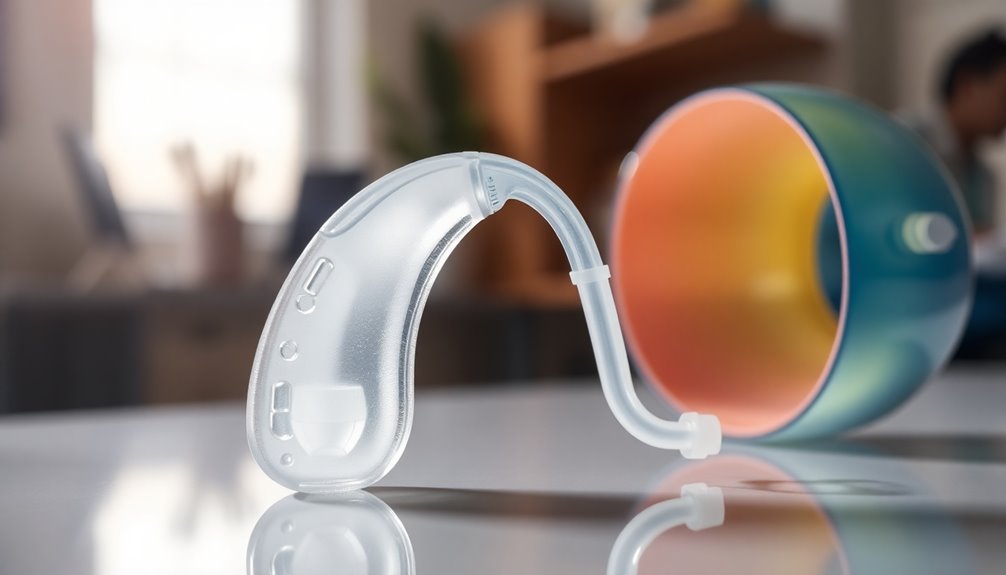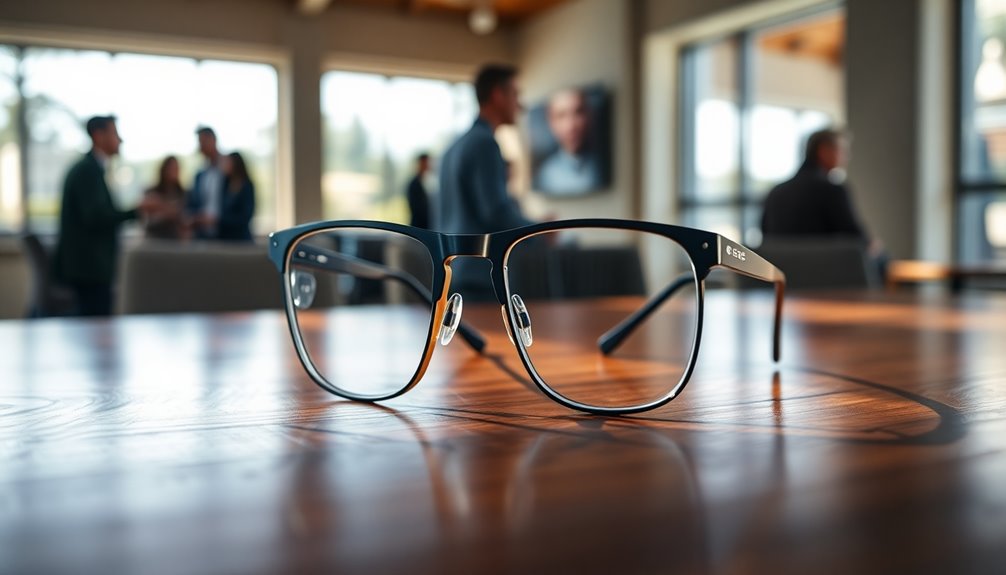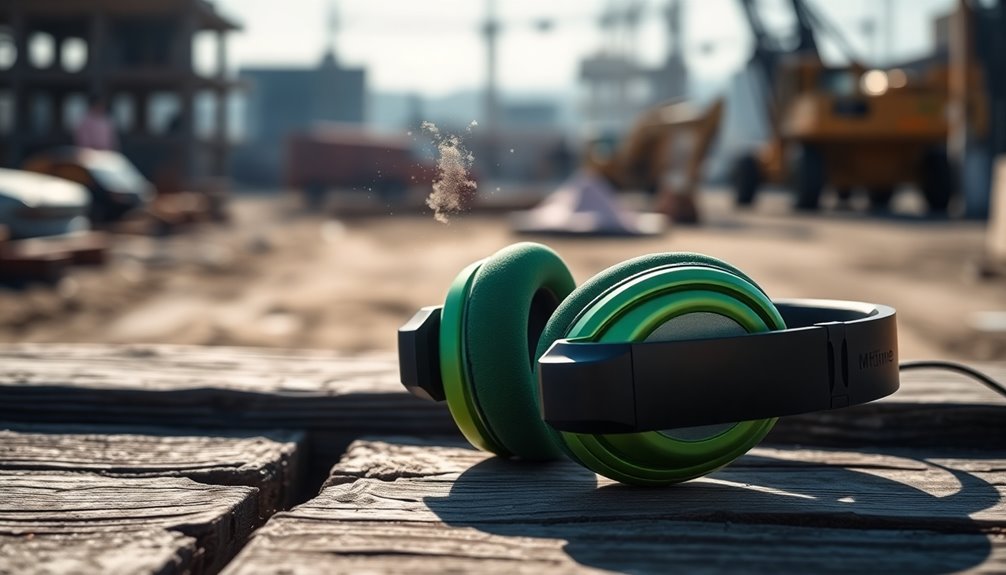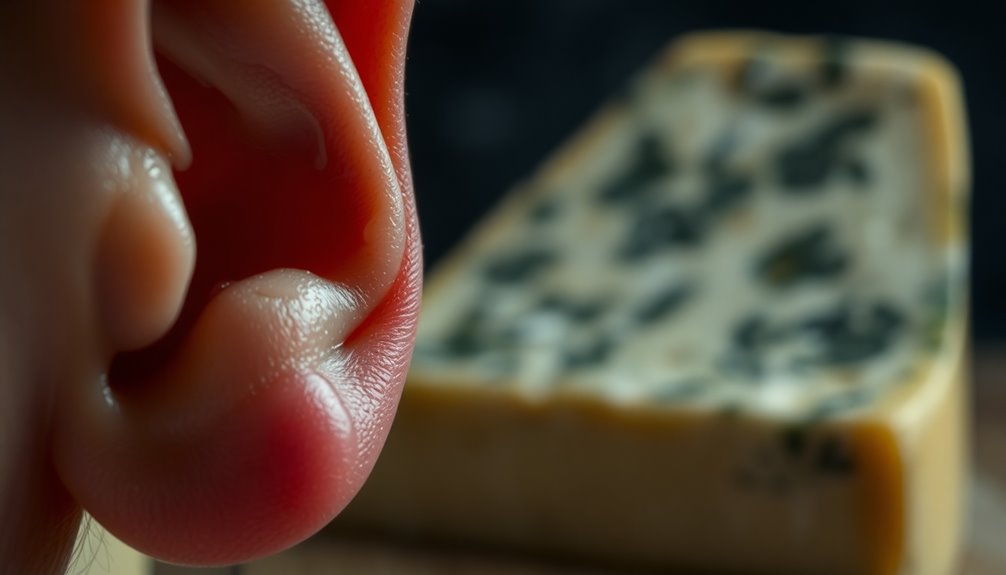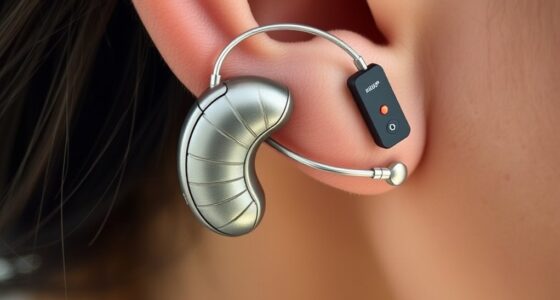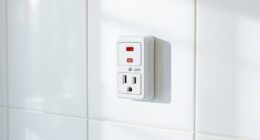When choosing between hearing aid molds and domes, it's crucial to consider your needs. Custom molds offer a snug fit, enhancing sound quality and reducing feedback, perfect for those with severe hearing loss. They can last years with proper care but require regular audiologist visits. On the other hand, domes are a cost-effective option, easy to maintain, and versatile for mild to moderate loss. However, they might not provide the same level of sound clarity. Exploring your unique situation can help guide you to the best choice for your hearing needs. You'll discover more insights on optimizing your hearing experience.
Key Takeaways
- Custom molds provide a snug fit, enhancing sound quality and preventing feedback, essential for those with severe to profound hearing loss.
- Domes are cost-effective and comfortable, ideal for mild to moderate hearing loss, allowing natural sound entry while amplifying mid and high frequencies.
- Regular maintenance is crucial; domes need frequent replacement, while earmolds can last years but require professional adjustments.
- Earmolds excel in noise reduction and directionality, improving sound experience in challenging environments compared to domes.
- Consulting an audiologist is recommended to determine the best option based on individual hearing loss severity and lifestyle needs.
Fit and Comfort

When it comes to fit and comfort, hearing aids molds and domes each offer unique benefits tailored to your needs. Custom-made molds fit the exact shape of your ear, providing a snug, personalized fit that helps prevent sound leakage and feedback. They're crafted from materials like silicone, acrylic, or vinyl, ensuring a secure feel. Just remember, your ear canal may change over time, so it's a good idea to visit your audiologist annually for adjustments. Additionally, hearing aid moulds are specifically designed to optimize sound quality, making them a great choice for those with more severe hearing loss.
On the other hand, domes come in various sizes and shapes, allowing them to fit different ear canal types. Made of soft silicone, they easily contour to your ear, making them lightweight and discreet. While they can be comfortable and easy to use, finding the right size might take some trial and error. If you encounter discomfort, switching sizes can help.
Both options require regular cleaning—wiping with a cloth dampened in peroxide works well—but molds can feel bulkier, requiring a bit of time to adjust. Ultimately, prioritizing a proper fit is essential for avoiding discomfort and achieving the best experience with your hearing aids.
Sound Quality and Performance

Sound quality and performance are crucial factors to consider when choosing between hearing aid molds and domes. If you want a snug fit that prevents sound leakage and reduces feedback, custom earmolds are your best bet. They direct sound efficiently toward your eardrum, enhancing overall sound quality. In contrast, domes—especially open ones—can lead to feedback issues, making them less effective for moderate hearing loss.
When it comes to amplification, earmolds excel at boosting low-frequency sounds, delivering a richer audio experience. Their custom venting allows you to control which sounds are amplified while letting others enter naturally. Domes may struggle with low-frequency amplification, and while closed domes offer some improvement, they still can't match the clarity of earmolds. Hearing aids primarily designed for speech enhancement may compromise music quality, leading to reports of distorted sound lacking depth and clarity.
Earmolds also shine in noisy environments, providing better noise reduction and directionality. This precision helps improve speech intelligibility, allowing you to focus on conversations. For music lovers, earmolds significantly enhance streaming quality by trapping low-frequency bass tones, creating a more immersive experience. Overall, if sound quality and performance are priorities for you, earmolds are the superior choice.
Maintenance and Durability

Regular maintenance is essential for both hearing aid molds and domes to ensure optimal performance and longevity. For domes, you should clean them daily with a soft, damp cloth or a specialized tool to remove earwax and debris. Avoid sharp objects like pins or toothpicks, as they can cause damage. Keep in mind that domes typically need replacement every 2-6 months due to wear from moisture and skin oils, so regular check-ups with your audiologist are necessary to determine the best replacement schedule. This is particularly important because domes are less effective for severe-to-profound hearing loss, making their proper maintenance even more crucial.
Earmolds, on the other hand, are generally more durable and can last longer with proper care. However, they may require occasional adjustments or replacements if your ear canal changes over time. While domes are easy to replace at home—making them convenient—you'll need to visit an audiologist for earmolds, which involves more time and cost.
Despite the ease of replacement, remember that domes are more susceptible to damage from earwax and moisture. Regular maintenance and checks are vital for both options to ensure they fit well and perform optimally over time.
Suitability for Hearing Loss
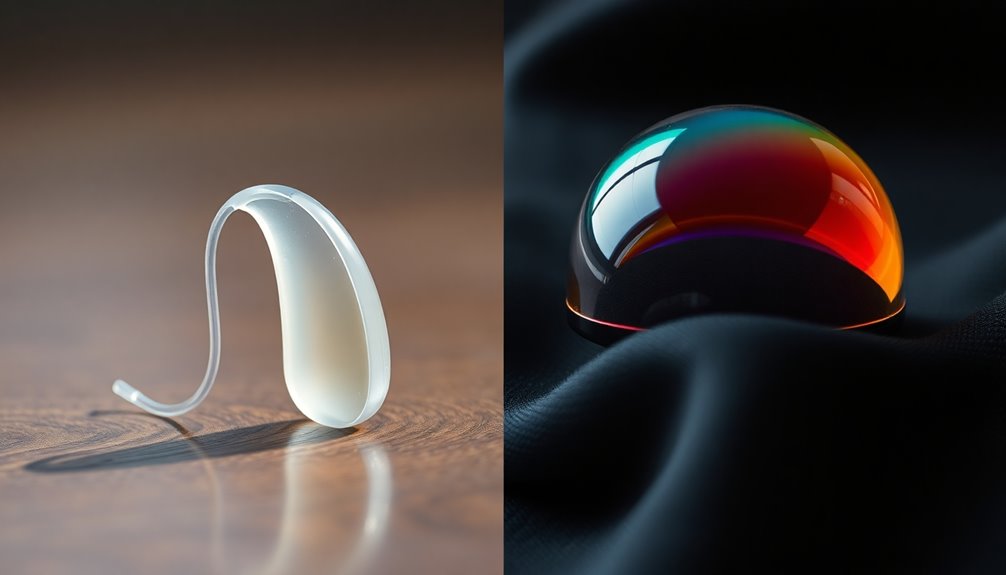
Choosing the right hearing aid option is vital for addressing your specific hearing loss needs. If you have mild to moderate hearing loss, domes might be your best bet. They're designed to amplify sounds primarily in the mid and high frequency ranges while allowing natural sounds to enter, providing a balanced listening experience. Domes are also comfortable and discreet, made from soft silicone for an easy fit. Additionally, domes are cost-effective at around $10 for a pack of six, making them an accessible choice for many users.
On the other hand, if you're dealing with severe to profound hearing loss, earmolds are more suitable. They offer a custom fit that ensures optimal sound quality and amplification, creating a better seal to minimize sound leakage. This snug fit also enhances feedback control, reducing annoying whistling sounds.
Consider your lifestyle and personal preferences when making this choice. Domes are easier to replace and maintain, perfect for those who value simplicity. However, if you need more power and control, earmolds might be worth adapting to, even if they feel more substantial. Ultimately, understanding your hearing loss degree will guide you in selecting the most effective option for your hearing needs.
Feedback Prevention

Preventing feedback in hearing aids is essential for an optimal listening experience. One of the primary causes of feedback is a loose fit. If your earmold or dome isn't snug, sound waves can escape and re-enter the microphone, creating that annoying whistling sound. To avoid this, ensure you have a custom fit that securely seals your ear canal. Regularly check that your hearing aid is placed correctly behind your ear and that the dome or earmold fits well.
Additionally, improper sealing can lead to feedback, so consult your audiologist for professional adjustments if needed. They can help you find the right size and shape for your device. Cleaning your hearing aid regularly is also crucial; blockages can contribute to feedback issues. Acoustic feedback is often due to improper fit of hearing aids, so addressing this aspect is vital for effective feedback management.
To further enhance your hearing aid experience, consider exploring advanced feedback suppression technologies, which can significantly improve sound clarity. Modern hearing aids come equipped with advanced feedback suppression technologies. Features like digital signal processing, notch filtering, and phase cancellation help identify and eliminate feedback before it disrupts your listening experience. If you continue to experience feedback despite your efforts, don't hesitate to reach out to your audiologist for further solutions. By taking these steps, you can enjoy clearer sound without the distraction of feedback.
Practical Considerations
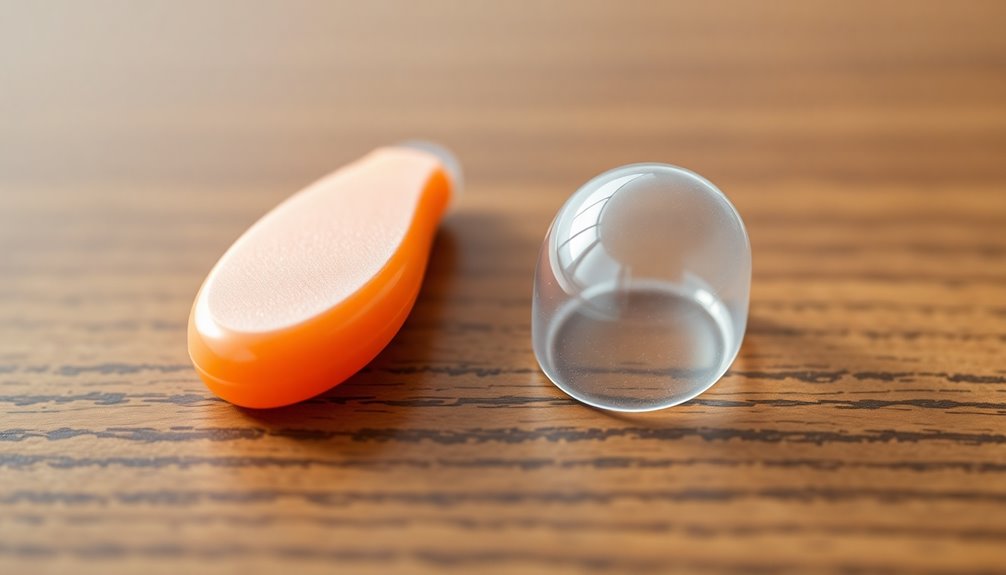
While feedback management is important, other practical considerations can significantly impact your hearing aid experience. Comfort and fit are crucial; domes, made from soft materials like silicone or foam, adapt to your ear canal without needing custom molds. This helps ensure a comfortable fit for most users. However, if you have a smaller or uniquely shaped ear canal, custom ear molds might offer better comfort since they're tailored specifically for your anatomy.
Maintenance is another key factor. Domes are easier to clean and are disposable, needing replacement every few months. In contrast, ear molds require annual inspections and can last for years if cared for properly. Daily cleaning for both involves wiping with a cloth dampened in peroxide. Regular maintenance is essential to ensure proper sound direction into the ear canal and includes removing accumulated earwax and bacteria.
Think about sound quality too. Domes let natural sounds in, which can be useful for mild to moderate hearing loss. Ear molds, on the other hand, provide better amplification across different frequencies, making them suitable for those with severe hearing loss. Finally, consider your lifestyle; domes are quicker to fit and replace, making them ideal for active individuals. Always consult a hearing care professional to find the best option for you.
Expert Recommendations

When it comes to selecting between ear molds and domes, experts emphasize the importance of matching the type to your specific degree of hearing loss. If you have severe or profound hearing loss, custom ear molds are your best bet. They provide a secure fit and a better seal in the ear canal, ensuring optimal sound amplification. For those with temporary hearing loss, domes are more suitable, especially if you mainly struggle with high-pitch sounds.
For those with moderate hearing loss, closed domes can enhance lower pitch sound amplification while still offering comfort. Open domes may work well if you have good low-frequency hearing and need help with mid and high frequencies. Proper fit is essential, as a proper fit enhances hearing aid performance and user experience.
Fit and comfort are crucial, so choose domes that come in various sizes and shapes, or opt for custom ear molds made from silicone or acrylic. Always maintain your hearing aids by cleaning them regularly and scheduling annual audiologist visits for inspections. If you notice any wear or fit issues, don't hesitate to replace your domes or ear molds to keep your hearing aid performance at its best.
Frequently Asked Questions
How Much Do Hearing Aid Moulds and Domes Typically Cost?
Hearing aid moulds typically start at around $80 each, primarily due to the custom fitting process. You might need multiple visits to your audiologist for adjustments, which can add to the cost. On the other hand, hearing aid domes are much cheaper, with prices starting as low as $2.99 for a pack. They're easy to replace and don't require any custom fitting, making them a more budget-friendly option overall.
Can Moulds or Domes Be Worn During Sports or Physical Activities?
Yes, you can wear earmolds or domes during sports or physical activities, but earmolds generally provide a more secure fit. They're customized to your ears, reducing the risk of them falling out during vigorous movements. Domes, while comfortable, might not stay in place as well, especially during high-impact activities. If you're active and have severe hearing loss, earmolds can offer better sound quality and noise reduction, enhancing your overall experience.
What Is the Lifespan of Hearing Aid Moulds and Domes?
The lifespan of hearing aid molds typically ranges from 2 to 5 years for adults, while children might need replacements every 6 to 12 months due to ear growth. Domes, on the other hand, should be replaced every 2 to 3 months. Factors like material, usage, and proper maintenance play a crucial role in their longevity. Regular cleaning and professional assessments can help you ensure they last as long as possible.
Are There Any Allergic Reactions Associated With Mould Materials?
Yes, there can be allergic reactions associated with earmold materials. You might experience symptoms like itching, redness, or swelling in your ear canal due to allergens found in certain materials, especially acrylic and epoxy resin. If you notice these signs, switching to silicone or hypoallergenic options could help reduce your risk. Regular cleaning and maintenance can also prevent moisture buildup, which may lead to irritation. If symptoms persist, consult your audiologist or dermatologist.
How Can I Tell if My Moulds or Domes Need Replacing?
You can tell if your molds or domes need replacing by looking for signs of wear like cracks, discoloration, or reduced flexibility. If you notice difficulty inserting them, feedback issues, or discomfort, it's time for a change. Regular use typically means replacing them every 2-3 months, but factors like earwax buildup or environmental conditions might require more frequent replacements. Always consult your audiologist for tailored advice on your specific needs.
Conclusion
In choosing between hearing aid molds and domes, it really comes down to your personal needs and preferences. Molds offer a snug fit and enhanced sound quality, while domes provide convenience and ease of use. Consider factors like comfort, maintenance, and your specific hearing loss. Consulting with your audiologist will help you make the best choice for your lifestyle. Ultimately, the right option can significantly improve your hearing experience, so don't hesitate to explore both!
